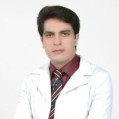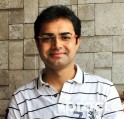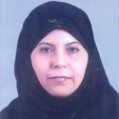Day 2 :
Keynote Forum
Amir Feily
Tehran University of Medical Sciences, Iran
Keynote: How to do hair transplantation very dense without necrosis and how to harvest more than usual with less scarring in follicular unit extraction (FUE): update on Feily’s method in dense hair transplantation

Biography:
Abstract:
Hair restoration is a safe procedure and most of its associated complications are preventable by the surgeon and/or the patient. Recipient area necrosis is rare, but arises when an increased number of recipient grafts are utilized and devascularization of the scalp occurs. The aim of this study was to investigate and compare all cases and pictures reported in main search engines and Iranian centers of hair transplant to find the dangerous zone of necrosis and to provide a new method for prevention of necrosis. Pictorial analysis of this study revealed that the majority of necrosis (14 of 18) occurs in central region of the scalp and is inclined, particularly, to the right parietal aspect of the scalp. Accord¬ingly, a case series was done and a new method for prevention of scalp necrosis even in dense packing transplantation was discussed. Also in another case series, we described our experience in harvesting more than usual with lessen scaring in follicular unit extraction (FUE).
Keynote Forum
Marcelo Mayorga
Uriate Cirugia Plastica, Bolivia
Keynote: After 500 breast augmentations: 7 things that have improved my surgical approach

Biography:
Abstract:
- Dermatological Diseases | Aesthetic and Cosmetic Dermatology | Dermatology: Therapies and Advances Clinical and Medical Dermatology | Hair and Nails | Melanoma | Aesthetic Non Surgical Procedure | Oral-Maxillofacial Surgery | Advances in Cosmetic Procedures
Location: sunset 2

Chair
Marcelo Mayorga
Uriarte Cirugia Plastica, Bolivia
Session Introduction
Mustafa Jaber and Diaa Jaber
Cairo University, Egypt
Title: Alopecia is not an immune disease, It's a hormonal deficiency
Biography:
Abstract:
Biography:
Shamma Aboobacker graduated from Yenepoya Medical College, India. She completed professional training as MSc in Clinical Dermatology at Cardiff University and MD DVL at Pondicherry University. She has expertise as Clinical Dermatologist since 2011, in United Arab Emirates and India, and currently an Assistant Professor at KMCT Medical College. She has keen interest in research activities and focuses on delivering up to date patient care. Her areas of proficiency include pigmentary disorders, skin malignancy, psoriasis and platelet rich plasma therapy. She is currently working on research involving melasma and another on platelet rich plasma therapy. She has published papers in reputed journals and has been serving as an Editorial Board Member of Journal of Surgical Dermatology.
Abstract:
Shaunak Patel
ADORN Cosmetic Clinic, India
Title: Newer indications of Q-switched Nd: YAG laser in skin of color

Biography:
Shaunak Patel is a recipient of Chancellor’s Gold medal in Dermatology & Founding President of Society of Aesthetic Advancements India (SAAI). He is a National Faculty in many dermatology conferences in India and a Trainer and Faculty Demonstrator for thread-lifting and micro cannula approach for filler injections. His research areas of interest are Pigmentation and Non-surgical face remoulding.
Abstract:

Biography:
Abstract:
Alice Connolly and Bronwyn Connolly
Peach Clinics, Australia
Title: Combining permanent hair removal and permanent makeup to reshape facial features

Biography:
Abstract:
Kenji Momo
Teikyo Heisei University, Japan
Title: Assessment of indomethacin oral spray for the treatment of anticancer therapy induced severe oral and oropharyngeal mucositis
Biography:
Abstract:
Amit Patel
University of Kentucky, USA
Title: Design thinking & aesthetic rhinoplasty applications in nasal ala reconstruction

Biography:
Amit Patel received his Medical Degree at the University of Louisville, Louisville, KY. He completed his residency in Otolaryngology at the University of Illinois at Chicago, IL. He went on to complete a Fellowship in Facial Plastic & Reconstructive Surgery at Meridian Plastic Surgeons/Affiliation with Indiana University, Indianapolis, IN. He currently holds the position of Assistant Professor with the Department of Otolaryngology-Head & Neck Surgery at the University of Kentucky where he practices Clinical and Surgical Otolaryngology specializing in facial plastic and reconstructive surgery and is also active in the education of residents and medical students. He is Board Certified by the American Board of Otolaryngology-Head & Neck Surgery and the American Board of Facial Plastic & Reconstructive Surgery. He is currently working on a patent for nasal drug delivery application
Abstract:
Vascular occlusion following facial fillers is rare, but unfortunately has the potential for some complications. In this talk, I will discuss the aesthetic, design, and key points for my specific surgical technique considerations for successful reconstruction following deficits of the nasal ala and tip. The reconstruction of large defects of the nasal ala requires an understanding of anatomy, nasal aesthetics, and complete functionality. This surgical technique, with design in mind, likely improves the ability to recreate a nasal airway to restore physiologic function while simultaneously allowing a symmetric and natural looking external contour. In the same fashion, translating aesthetic rhinoplasty techniques into the design process facilitates the proper outcome. Striving for proper surgical technique, while keeping in mind creativity and design often leads to the best outcomes and the most satisfied patients, specifically when it comes to aesthetic rhinoplasty applications in nasal ala reconstruction
Sabreen Zamil
Sabreen Zamil Clinic, Kuwait
Title: Reduction mammoplasty in males my preferred technique

Biography:
Abstract:
Marisse Venter
Netcare Milpark Hospital, South Africa
Title: Analyzing the effects of facial fat fills as explained by an animal study: The effect of lipo-aspirate on wound healing

Biography:
Marisse Venter is a successful, highly qualified Plastic and Reconstructive Surgeon. She has a special interest in breast reconstruction and cosmetic surgery. She is the only female Plastic and Reconstructive Surgeon in the Breast Care Centre of Excellence at Netcare Milpark Hospital. She qualified from the University of Cape Town in 2002 and her specialization encompassed 4 years of general surgery and a further 4 years of plastic surgery at the University of the Witwatersrand from where she qualified as a plastic surgeon. In 2004 she completed 1-year military training in North West Mafikeng & Potchefstroom at the Military health units. She was also an Acting Consultant at the Helen Joseph Hospital, teaching breast reconstruction to training doctors
Abstract:
Iqbal Bukhari
1Imam Abdulrahman AlFaisal University, Saudi Arabia
Title: Spontaneous resolution of lipedematous scalp after 13 years
Biography:
Iqbal Bukhari is highly motivated professor and consultant dermatologist with more than 25 years of good experience in many dermatological diseases and their management. Special interest in laser therapy, phototherapy, dematopathology, cosmetic dermatology and study of genetic diseases. Has many publications in various international medical journals
